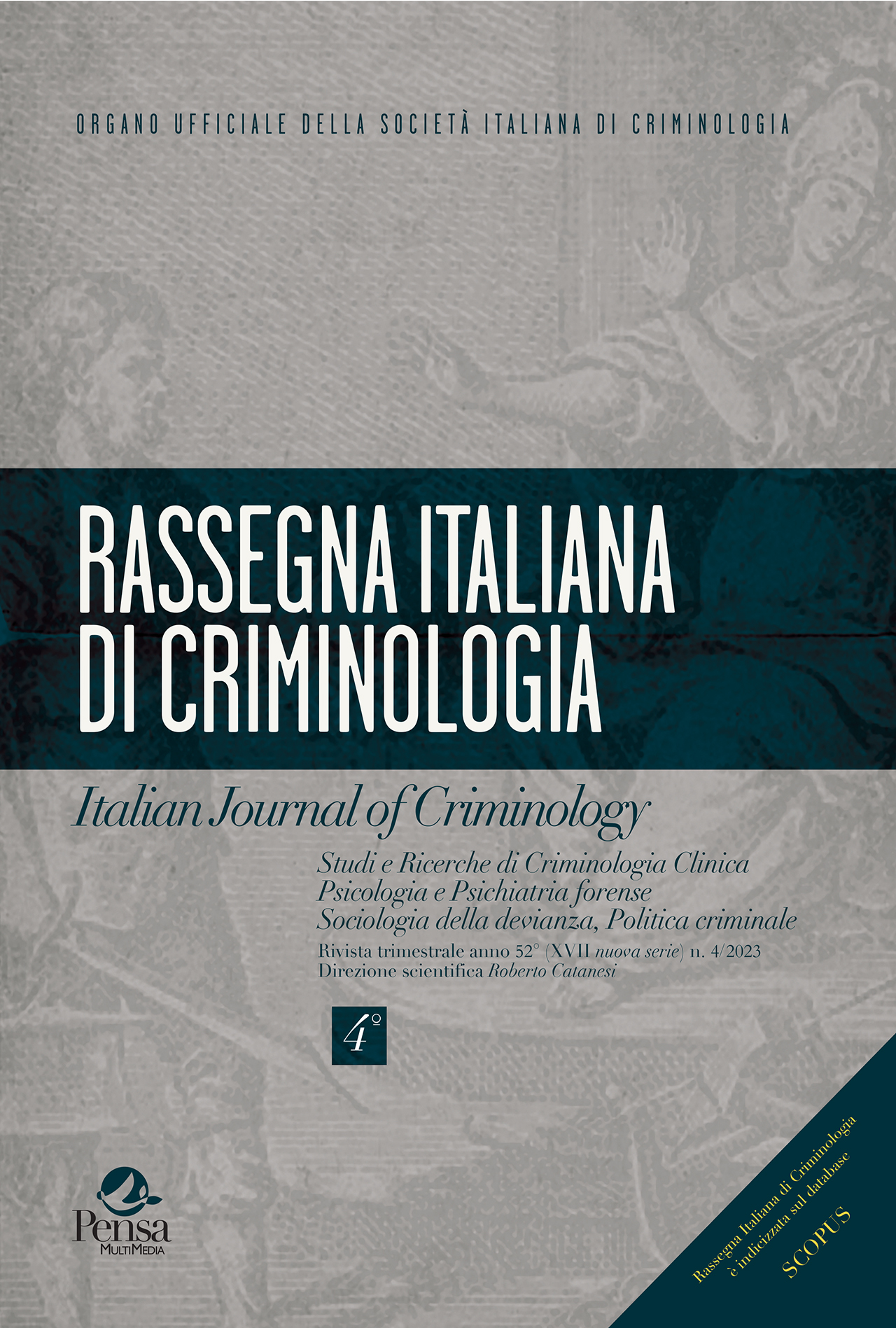Application of Hayward and Young's Cultural Criminology Framework to the Film, Joker
DOI:
https://doi.org/10.7347/RIC-042023-p265Abstract
This article explores the film, Joker according to Hayward and Young’s five motifs of cultural criminology by thematic analysis. Based on signs, symbols and significations, we analyze how structural and emotional variables affect on crime. In the film, the Joker, as a villainous character, kills seven people as part of his transgressive comedy act. Feelings such as anger and excitement in the Joker’s character represent a lens of adrenaline and psychological violence to challenges the rational choice. In the final shots, killing the therapist and bloody footprints confirms the Joker’s anarchic jester as an attentive gaze. Due to crisis of rats as a symbol of inequality, the Gotham Carnival was created. This political carnival not only shows the under life of city, but also represents the lower class riot, violent clowns and systemic violence. While Joker is introduced as a superhero and symbol of this carnival, the heroism project of Joker is a dangerous knowledge. However, transition from fictional events to real life events illustrates that Jihadi terrorist activities are consistent with Hayward and Young’s five motifs of cultural criminology.





